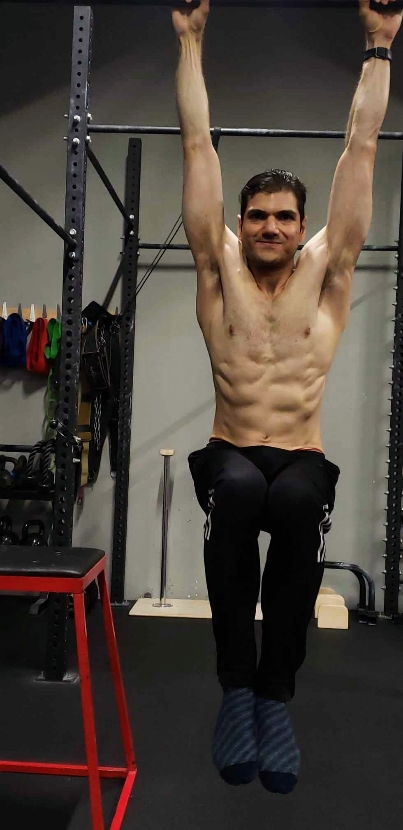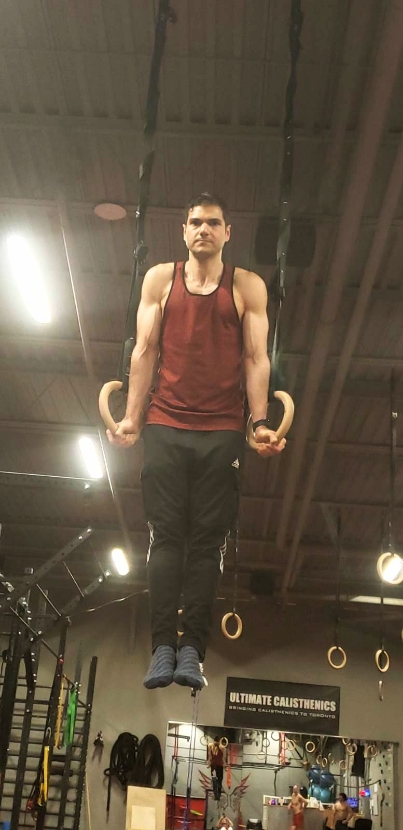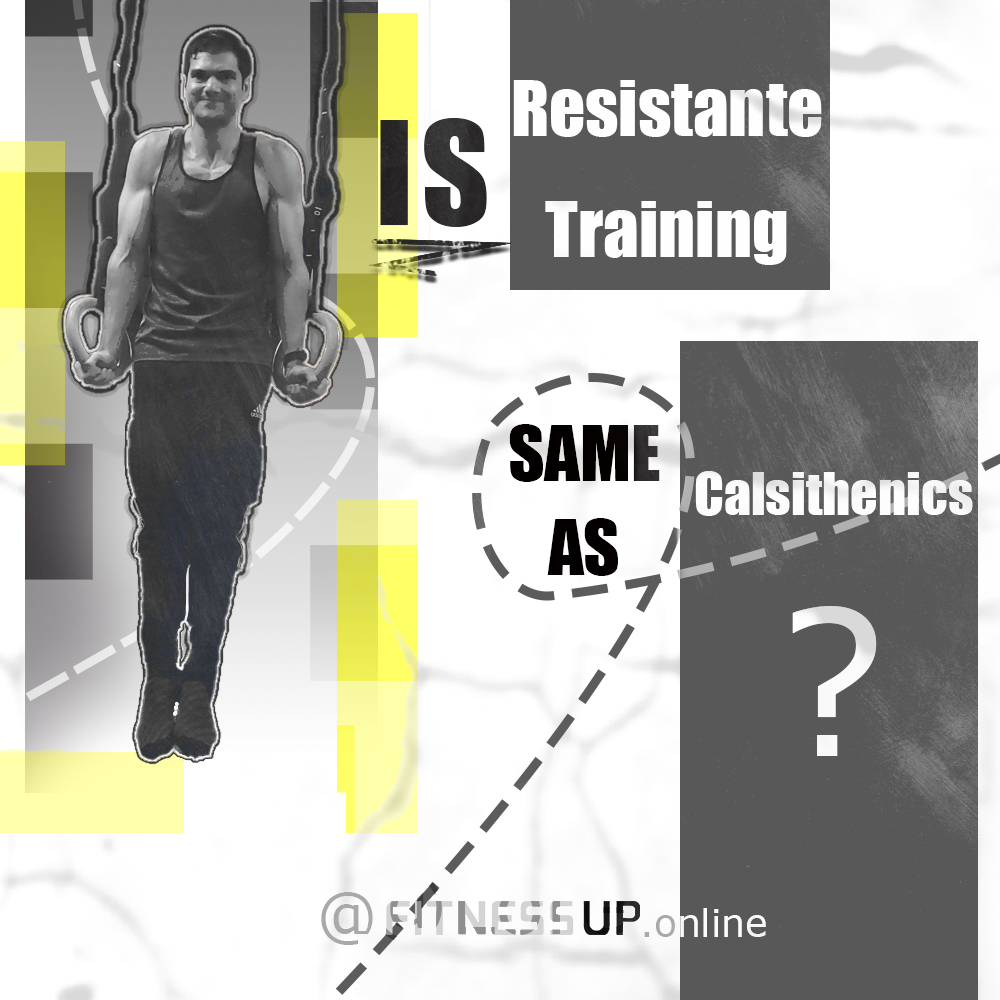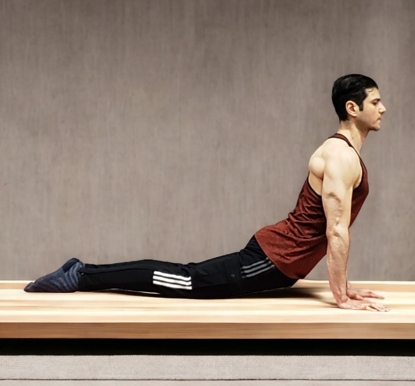If you’re new to the world of fitness, you may be wondering whether resistance training and calisthenics are the same thing. While both types of exercise involve using your own body weight to build strength and muscle, there are some key differences between the two. In this article, we’ll take a closer look at what resistance training and calisthenics are, how they compare to one another, and which one may be right for you.
Resistance training is a type of exercise that involves lifting weights or using resistance bands to build strength and muscle. It typically involves targeting specific muscle groups with exercises like bicep curls, squats, and bench presses. Calisthenics, on the other hand, is a form of bodyweight training that uses movements like push-ups, pull-ups, and lunges to build strength and muscle. Because it doesn’t require any equipment, calisthenics can be done anywhere and is often used in military training and gymnastics.
While both resistance training and calisthenics can help you build strength and muscle, they have some key differences. Resistance training may be better suited for those looking to build muscle mass quickly, while calisthenics is great for improving overall fitness and functional strength. Ultimately, the choice between the two will depend on your personal fitness goals and preferences.
Key Takeaways
- Resistance training involves lifting weights or using resistance bands, while calisthenics is a form of bodyweight training.
- Resistance training may be better for building muscle mass quickly, while calisthenics is great for overall fitness and functional strength.
- The choice between resistance training and calisthenics depends on your personal fitness goals and preferences.
Understanding Resistance Training
Definition of Resistance Training
Resistance training is a form of exercise that involves using an external resistance to work your muscles. This can be done with weights, resistance bands, or even just your own body weight. The goal of resistance training is to increase muscle strength, endurance, and size.
Resistance training can be broken down into two main categories: isotonic and isometric. Isotonic exercises involve moving a weight through a range of motion, such as a bicep curl. Isometric exercises involve holding a weight in a static position, such as a plank.
Benefits of Resistance Training
There are many benefits to incorporating resistance training into your fitness routine. Here are just a few:
- Increased muscle strength: Resistance training can help you build stronger muscles, which can make everyday activities easier and help prevent injuries.
- Improved bone density: Resistance training can help improve bone density, which is especially important as you age.
- Increased metabolism: Building muscle through resistance training can help increase your metabolism, which can help you burn more calories throughout the day.
- Improved body composition: Resistance training can help improve your body composition by increasing muscle mass and decreasing body fat.
- Improved mental health: Resistance training has been shown to have positive effects on mental health, including reducing symptoms of anxiety and depression.
Overall, resistance training is a great way to improve your overall health and fitness. By incorporating resistance training into your routine, you can build stronger muscles, improve your bone density, and enjoy a host of other benefits.
Understanding Calisthenics
Calisthenics is a type of resistance training that involves using your body weight to perform exercises. It is a form of strength training that doesn’t require any equipment or weights. The word “calisthenics” comes from the Greek words “kallos” meaning beauty and “sthenos” meaning strength. Calisthenics exercises are designed to improve your strength, flexibility, and overall fitness.
Definition of Calisthenics
Calisthenics involves using your own body weight to perform exercises that work your muscles. Some of the most common calisthenics exercises include push-ups, pull-ups, squats, lunges, and planks. These exercises can be performed anywhere and at any time, making calisthenics a convenient and accessible form of exercise.
Calisthenics can be done by people of all fitness levels, from beginners to advanced athletes. The exercises can be modified to make them easier or more challenging, depending on your fitness level and goals. For example, you can perform push-ups on your knees if you’re a beginner, or you can add a clap in between push-ups to make them more challenging.

Benefits of Calisthenics
Calisthenics offers several benefits for your physical and mental health. Here are some of the key benefits of calisthenics:
- Builds strength: Calisthenics exercises work your muscles and help to build strength and endurance. By performing these exercises regularly, you can improve your overall fitness and physical performance.
- Improves flexibility: Many calisthenics exercises involve stretching and moving your body through different ranges of motion. This can help to improve your flexibility and range of motion.
- Increases cardiovascular fitness: Calisthenics exercises can get your heart rate up and improve your cardiovascular fitness. This can help to reduce your risk of heart disease and other chronic health conditions.
- Requires no equipment: One of the biggest advantages of calisthenics is that it doesn’t require any equipment or weights. You can perform these exercises anywhere and at any time, making it a convenient form of exercise.
- Can be modified: Calisthenics exercises can be modified to make them easier or more challenging, depending on your fitness level and goals. This makes it a great form of exercise for people of all fitness levels.
Overall, calisthenics is a great form of exercise that can help to improve your strength, flexibility, and overall fitness. By incorporating these exercises into your workout routine, you can achieve your fitness goals and improve your overall health and well-being.

Comparing Resistance Training and Calisthenics
When it comes to strength training, two popular forms are resistance training and calisthenics. Although they have some similarities, there are also some key differences between the two.
Similarities
Both resistance training and calisthenics are forms of strength training that involve using your body weight as resistance. They can both help you build muscle, increase strength, and improve your overall fitness. Additionally, both types of training can be done at home or in a gym with little to no equipment.
Differences
The main difference between resistance training and calisthenics is the type of resistance used. Resistance training typically involves using external weights, such as dumbbells, barbells, or resistance bands, to provide resistance to your muscles. On the other hand, calisthenics primarily uses your body weight as resistance, although some calisthenics exercises may involve using equipment like pull-up bars.
Another difference between the two is the type of movements involved. Resistance training often involves isolated movements, such as bicep curls or leg extensions, that target specific muscle groups. Calisthenics, on the other hand, involves more full-body movements, such as push-ups, squats, and lunges, that work multiple muscle groups at once.
Finally, the intensity of the two types of training can also differ. Resistance training often involves lifting heavier weights for fewer reps, while calisthenics typically involves doing more reps with less weight (i.e., your body weight). However, both types of training can be adjusted to suit your fitness level and goals.
In summary, while resistance training and calisthenics are both forms of strength training, they differ in the type of resistance used, the type of movements involved, and the intensity of the training. Ultimately, the best choice for you will depend on your fitness goals and personal preferences.
Choosing Between Resistance Training and Calisthenics
When it comes to building strength and muscle, there are two main options: resistance training and calisthenics. Both forms of exercise have their own unique benefits, and the choice between the two ultimately depends on your personal goals and preferences. In this section, we will explore the factors to consider when choosing between resistance training and calisthenics.
Factors to Consider
Equipment
One of the biggest differences between resistance training and calisthenics is the equipment required. Resistance training typically involves using weights, resistance bands, or machines, while calisthenics relies solely on bodyweight exercises. If you have access to a gym or home gym equipment, resistance training may be a more convenient option. On the other hand, if you prefer to work out at home or outside, calisthenics may be a better fit.
Muscle Groups
Another factor to consider is which muscle groups you want to target. Resistance training allows for more targeted muscle isolation, while calisthenics tend to work multiple muscle groups at once. If you’re looking to build strength in specific areas, resistance training may be the better choice. However, if you want a full-body workout that targets multiple muscle groups at once, calisthenics may be a better fit.
Intensity
Both resistance training and calisthenics can be intense forms of exercise, but the level of intensity can vary depending on the exercises and equipment used. Resistance training typically allows for heavier weights and more resistance, which can lead to greater muscle growth and strength gains. However, calisthenics can also be challenging and can provide a great cardiovascular workout.
Personal Goals
Ultimately, the choice between resistance training and calisthenics depends on your personal goals. If you’re looking to build muscle and strength in specific areas, resistance training may be the better choice. On the other hand, if you want a full-body workout that targets multiple muscle groups and provides a cardiovascular challenge, calisthenics may be the way to go.
It’s also important to consider your current fitness level and any injuries or limitations you may have. If you’re new to exercise or have a history of injuries, calisthenics may be a safer and more accessible option. However, if you’re an experienced lifter or have specific strength goals, resistance training may be the better choice.
Ultimately, the choice between resistance training and calisthenics comes down to personal preference and goals. Both forms of exercise can be effective for building strength and muscle, so choose the one that feels best for you and fits your lifestyle and fitness goals.
Conclusion
In conclusion, both resistance training and calisthenics are effective forms of exercise that can help you build muscle, increase strength, and improve your overall fitness. While resistance training involves using external weights or resistance bands to challenge your muscles, calisthenics relies on using your body weight to perform exercises like push-ups, squats, and pull-ups.
Both forms of exercise can be adapted to meet your fitness goals and can be modified to suit your fitness level. Resistance training may be more beneficial if you want to focus on building muscle mass, while calisthenics may be more effective for improving your overall fitness and functional performance.
Ultimately, the best form of exercise for you will depend on your personal preferences, fitness goals, and overall health. It’s important to consult with a qualified fitness professional before starting any new exercise program to ensure that it’s safe and effective for you.
Remember to always listen to your body and progress at a pace that feels comfortable for you. With consistency and dedication, both resistance training and calisthenics can help you achieve your fitness goals and improve your overall health and well-being.
Frequently Asked Questions
What are some effective calisthenics exercises?
Calisthenics exercises use your own body weight as resistance to build strength and improve overall fitness. Some effective calisthenics exercises include push-ups, squats, lunges, pull-ups, dips, and planks. These exercises can be modified to increase or decrease difficulty, making them suitable for people of all fitness levels.
What are the benefits of incorporating calisthenics into your workout routine?
Incorporating calisthenics into your workout routine can have numerous benefits. Calisthenics exercises can improve muscular strength, endurance, balance, flexibility, and coordination. They can also help increase cardiovascular fitness and promote weight loss. Additionally, calisthenics can be done anywhere without the need for equipment or a gym membership.
Can calisthenics alone help build muscle mass?
While calisthenics can help build muscle mass, it may be more difficult to achieve significant muscle growth compared to weightlifting or other forms of resistance training. However, by increasing the number of repetitions or using more difficult variations of exercises, you can still achieve muscle growth with calisthenics.
What is the difference between calisthenics and weightlifting?
Calisthenics and weightlifting are both forms of resistance training, but they use different types of resistance. Calisthenics use your own body weight as resistance, while weightlifting uses external weights such as dumbbells or barbells. Calisthenics exercises tend to be more functional and use multiple muscle groups, while weightlifting exercises can be more targeted to specific muscle groups.
Is it possible to get ripped with just calisthenics?
Yes, it is possible to get ripped with just calisthenics. However, it may take longer to achieve significant muscle growth compared to weightlifting or other forms of resistance training. To get ripped with calisthenics, it is important to focus on progressive overload, proper form, and nutrition.
What is the best way to start a calisthenics workout routine?
The best way to start a calisthenics workout routine is to begin with basic exercises and gradually increase difficulty over time. Start with exercises such as push-ups, squats, and lunges, and then progress to more challenging exercises such as pull-ups, dips, and handstands. It is also important to incorporate rest days into your routine to allow your muscles to recover.







Leave A Comment